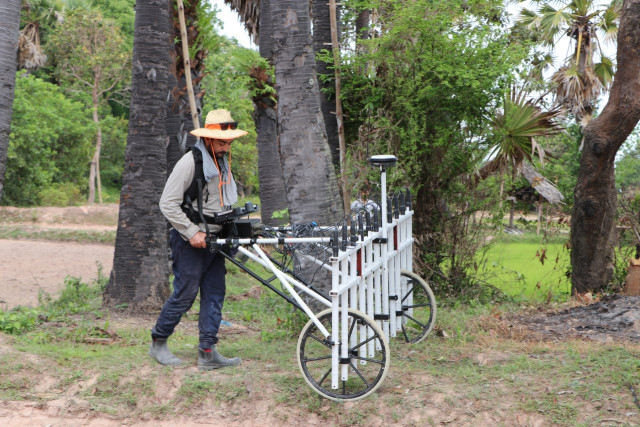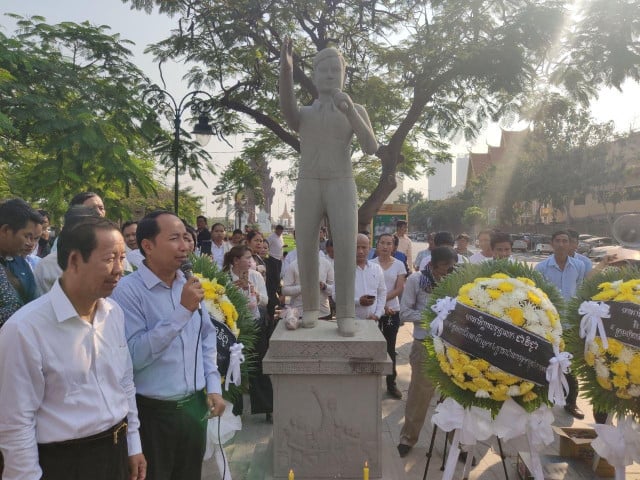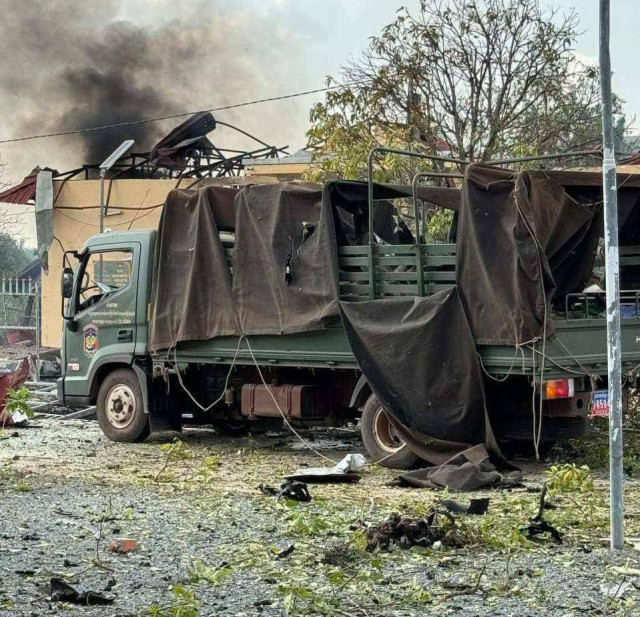Newly Discovered Kiln Sheds Light on Angkor’s Metals Industry

- By Isa Rohany
- July 18, 2023 7:30 PM
SIEM REAP - Recent collaboration in archaeological studies has revealed more evidence of kilns used to supply Cambodia’s ancient metal workshops.
Through Light Detection and Ranging (LiDAR) devices, experts from the APSARA National Authority, the US and Australia were able to pinpoint kilns with more precision near Mount Bok, 30 kilometres northeast of Siem Reap city.
The team is focusing on an area where villagers often find iron slag in their rice paddies. Historian Im Sokrithy of APSARA believes a spot known locally as “kok ach dek” or “iron slag hill”, to be a kiln based on the evidence.
“This is a newly discovered station,” Sokrithy said.
“Researchers have evidence showing almost certainly that this is a kiln.” Pieces of iron slag and clay materials were recorded.

Iron slag hill is a spot unused by local people. Two similar spots have been found in the Angkor Park near Mount Bok. More extensive research also suggests ancient kilns outside the park, such as those in Preah Vihear province and other districts of Siem Reap province.
Sokrithy says these findings are important because they can shine light on the history of the Angkor city, a former center of politics and commerce where almost a million people lived.
Iron played a crucial role in engineering of the interconnected infrastructure of roads, temples, reservoirs and canals.
To study the site, experts from the University of Hawaii and Flinders University used a magnetometer to scan for initial data before archaeological excavation.
“It produces data through waves that bounce back from an object,” Sokrithy said.
“The machine will let us know if there is something inside such as the structure of a kiln. The result provides researchers with precise information without having to guess.”
Sokrithy said the spot was not necessarily a major part of the metals industry. It could be a community kiln used to serve the needs of the villagers.
If Siem Reap province has many ancient kilns, could the province also contain a lot of iron ore? This is a common question asked by the journalists.

He said studies had found no evidence of iron ore resources nearby. Raw materials like this could be transported from nearby provinces such as Preah Vihear or Oddar Meanchey.
“This discovery offers us additional information about the history of Angkor in relation to the metal industry”, Sokrithy said.
“We have some information but it is relatively little when compared to our knowledge about religious monuments.”
Iron slag hill could also be a future tourist attraction by providing a glimpse of how people used to make a living in past times.
Written in Khmer for ThmeyThmey News, this story was translated by Ky Chamna for Cambodianess News.















